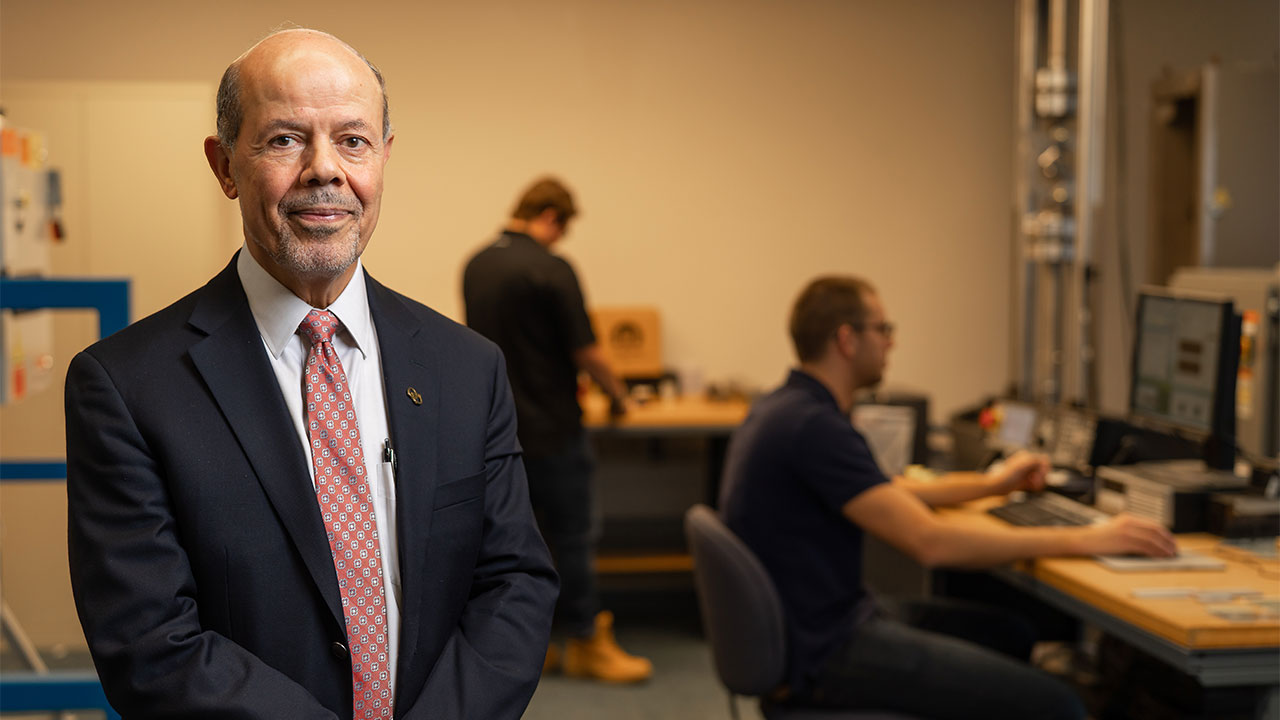OU partners with Georgia Tech, University of Tennessee on NSF-funded research center

Oakland University is partnering with the Georgia Institute of Technology (Georgia Tech) and the University of Tennessee-Knoxville on a collaborative research center designed to boost the United States’ leadership in engineering research and global competitiveness.
A $700,000 grant from the National Science Foundation, matched by $900,000 from industry, will support establishment of the OU site of the Industry-University Cooperative Research Center (IUCRC) for Composite and Hybrid Materials Interfacing (CHMI). This one-of-a-kind center will consist of three independent, but closely coordinated, sites at each of the partnering universities.
Each site will direct its research toward a different application thrust and sector of the U.S. economy; Georgia Tech will focus on the aerospace industry, Tennessee-Knoxville on infrastructure and biomedical applications, and Oakland on automotive applications, including automobiles, ground vehicles and farm equipment.
Composite and hybrid materials interfacing (CHMI) research includes material-joining science and technology, dissimilar-material compatibility, contact surface treatment, corrosion and delamination protection, and non-destructive testing and inspection. This research has extensive applications in the aerospace, automotive, national security, biomedical, energy and personal protective gear sectors of the U.S. economy.
According to Dr. Sayed Nassar, distinguished professor of mechanical engineering and founding director of OU’s Fastening and Joining Research Institute (FAJRI), the use of composite and hybrid materials has increased dramatically over the past several decades in response to growing demand for light-weight, energy-efficient products. The properties of these materials, such as their mechanical strength, electrical conductivity and reactions to chemicals, factor into their reliability, making cutting-edge CHMI research crucial for quality control across numerous industries.
As Dr. Nassar explains, “Current lack of dedicated, science-based CHMI research often complicates maintenance, repair and overhaul of safety-critical composite and hybrid material joints. Failures in these joined materials can cause injury and loss of human life. Research at this NSF-funded center will identify and develop breakthrough technologies, advanced smart materials, artificial intelligence and software tools, and other methods that will revolutionize the science and technology for joining composite and hybrid materials.”
The combined CHMI team includes 20 faculty experts and more than 30,000 square feet of dedicated lab space with state-of-the-art research equipment and instrumentation at the three partnering university sites in Michigan, Georgia, and Tennessee. The OU faculty team has diverse expertise that spans many areas, including material-joining, non-destructive testing, material characterization, artificial intelligence, modeling and simulation, data analytics, and advanced manufacturing. Dr. Nassar is the Principal Investigator and will serve as director of the OU site of the new center.
“Because of its proximity to, and ongoing sponsored research collaboration with, the major U.S. automotive OEMs in Southeast Michigan, the Oakland University site for the Composite and Hybrid Materials Interfacing center will focus on the automotive, ground vehicle, farm equipment and renewable energy (wind turbine) sectors,” said Dr. Nassar. “The goal is to transform the current non-standardized, often costly and labor-intensive processes for lightweight material interfacing to science-based, standardized technologies and processes.”
The project will implement a 10-year plan to significantly reduce (by at least 50%) the cost, cycle time, and performance variation of composite and hybrid material interfaces. This goal will be achieved with a focus on four research areas: design, modeling and analysis; materials and process engineering; testing and non-destructive evaluation; and secure data and digital technologies.
“Oakland University is very excited about The Center and this collaboration with Georgia Tech and the University of Tennessee,” said Dr. David Stone, OU’s Vice President for Research. “We expect The Center to take our already long-established and productive relationships with the automotive industry and the Army ground vehicle command to the next level. The Center will also provide training and research opportunities for graduate and undergraduate students, and will work to involve underrepresented minority students and veterans through scholarship and both existing and new Research Experiences for Undergraduates (REU) programs.”


 July 7, 2021
July 7, 2021